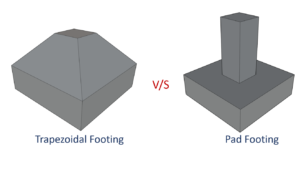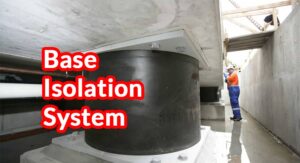
What Is Waterlogging?
When there is too much water in a plant’s root zone, it causes waterlogging, which reduces the amount of oxygen available to the roots.
Waterlogging can be a serious problem to plant growth and production, and in some cases, it can cause plant death.
This constraint may not be visible until the entire soil profile has been saturated and water has surfaced.
The agency provides technical information and assistance to landowners on management alternatives for recognizing and reducing the effects of waterlogging.
In simple words, waterlogging is the saturation of soil with water either temporarily or permanently. When there is an excess amount of water in an area, the soil is unable to absorb the water as it should.
It can also occur when the water table rises to the point that the soil pores in the crop root zone get clogged.
As a result, the regular supply of air in the soil is restricted, resulting in a decrease in oxygen levels and a rise in carbon dioxide and ethylene levels.

Effects Of Water-Logging
The effects of waterlogging are as follows:
1. Poor Aeration Of Soil
Waterlogging causes the air within the soil to escape into the atmosphere, where it is replaced by more and more amount of water. It fills up the voids present in the soil.
An insufficient supply of oxygen slows or stops the plant’s growth, while accumulated carbon dioxide impedes the growth of the plant’s roots.
Inadequate aeration also promotes the growth of poisons and other harmful chemicals. Saturated soil also inhibits microbial activity, which is necessary for plant food synthesis.
2. It Causes Changes In The pH Of Soil
The pH value of the inundated soils changes and becomes more acidic. As a result, the soil’s alkalinity drops, making plant development more challenging. Plant life cannot survive in the increasingly acidic soil.
3. Temperature Variation In The Soil
Waterlogging causes the soil’s temperature to drop. Low moist soil temperatures impact microorganisms and their activities, decreasing the rate of nitrogen fixation.
4. Reduced Maturity Time Of Crops
Waterlogged soils are characterized by crop maturation that is delayed. The agricultural yield is significantly lowered as a result of the crop time being shortened.
5. Growth Of Wild Plants In Waterlogged Area
When the earth becomes saturated with water, a plethora of water-loving wild plant species thrive. Wild plant development completely limits the establishment of beneficial crops.
6. Decreased Availability Of Capillary Water
Plant life derives its substance from the soil solution that surrounds soil particles and is taken into the plants via capillary action and osmosis.
If the water table is high, plant roots are restricted to the upper layers of soil above the water table, however, if the water table is low, plant roots have more room to expand.
Causes Of Waterlogging
Following are the causes of water-logging:
1. Topography Of The Land
Waterlogging can be caused by a location’s terrain, slope, form, and drainage patterns. Physiography, in other words, determines the rate of surface runoff and the time it takes the soil to drain surface water.
Because surface flows concentrate on the lowlands, low-lying places such as valleys, depressions, and flat lowlands, for example, endure more waterlogging naturally, resulting in natural swamps and other waterlogged lands.
Water cannot easily travel under the pull of gravity in such regions, causing it to amass over time.
2. Over Irrigation
When the water is liberally applied to the fields, the excessive water percolates deeply inside the grounds where it meets the water table. Due to this activity, the water table at that location arises.
3. Inadequate Surface Drainage
Due to insufficient surface drainage, the heavy precipitation in the surrounding area causes flooding of the land. This gives a rise to heavy percolation and as a result, the water table rises.
4. Seepage From Canal
water seeps from the bed and sides of an unlined cannel. It adds to the groundwater reservoir and there is a general rise in the water table, which may lead to waterlogging.
5. Obstruction Of Natural Drainage
A natural drainage system will not be able to pass rainwater if it is blocked by an irrigation canal, a road, or a rail embankment. As a result, flooding will occur in the area, resulting in waterlogging of the land.
6. Obliteration Of Natural Drainage
Occasionally, the cultivators will plough up and destroy an existing natural drainage system. As a result, stormwater movement is halted, resulting in flooding and land waterlogging.
7. Construction Of Reservoir
Seepage from a reservoir increases groundwater storage, which can lead to waterlogging if the water table rises too high.
8. Nature Of Soil
The nature of the soil plays a role in waterlogging. Over watering or flooding can cause waterlogging in soil with low permeability, such as black cotton soil.
9. Defective Method Of Cultivation
Defective farming methods, such as the construction of high levees, insufficient soil preparation, incorrect crop choices, and so on, can result in the formation of pools of stagnant water and, as a result, waterlogging of land.
10. Defective Practice Of Irrigation
Waterlogging of land can occur as a result of poor irrigation methods such as using a high intensity of irrigation, applying a deep depth of water, and so on.

Prevention Of Waterlogging
1. Restricted Irrigation
Farmers should be trained on how to use water wisely. Irrigation should be maintained to a minimum. The average annual intensity of irrigation should be between 40 and 60 percent.
2. Efficient Surface Drainage
Waterlogging can be reduced using an efficient surface drainage system that allows for a quick movement of rainwater.
3. Reducing Seepage From Canals
The seepage from the canal can be reduced by the following procedures:
- Lining of irrigation channels
- Lowering of F. S. L. in the channels
- Construction intercepting drains along the canals
4. Improving Natural Drainage In The Area
Streams and rivers should be improved for natural drainage. It entails clearing the stream of weeds, bushes, and other vegetation that obstructs the flow. Increasing stream bed slops helps drainage as well.
5. Prevention Of Seepage from Reservoir
Small reservoir seepage can be reduced by lining the reservoir’s surface; for larger reservoirs, appropriately engineered toe filters should be constructed so that reservoir seepage is released into natural streams.
6. Changing The Crop Pattern
Crop patterns should be altered in areas prone to waterlogging. Crops that require extensive irrigation should be avoided, while those that require little irrigation should be encouraged.
7. Adopting Well Irrigation
When well irrigation is used in the area, the water table drops and the likelihood of waterlogging of the land is greatly decreased. In such areas, a combination of canal irrigation and well irrigation must be used.
8. Adopting Better Methods Of Applications Of Water
Waterlogging can be avoided by using efficient water application methods such as sprinkler irrigation and drip irrigation.
9. Changing The Assessment Method
When the water provided to cultivators is assessed on an area basis, the cultivators have a tendency to utilize costlier water, resulting in waterlogging. Water access is restricted and the likelihood of waterlogging is avoided by using volumetric evaluation of water.




